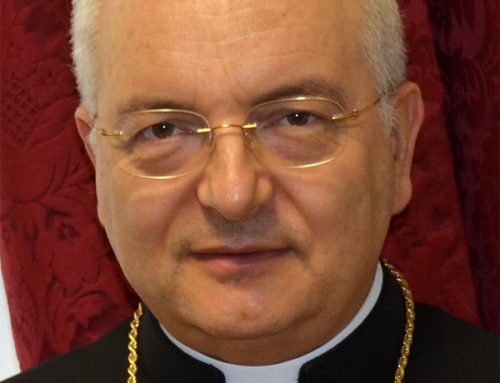Pope Francis Evokes Revered Symbols for Cubans in First Speech
From the revolutionary José Marti to Our Lady of Charity of El Cobre, Pope Francis evoked hallowed symbols of the Cuban people as he arrived on Saturday in a country that is mostly Catholic but has relatively few churchgoers after more than five decades of communist rule.
It was veterans of Cuba’s 1898 War of Independence who, “moved by sentiments of faith and patriotism,” wanted Our Lady of Charity to be the new nation’s patroness, Pope Francis said during a welcoming ceremony at José Marti International Airport in Havana.
He added, “The growing devotion to the Virgin is a visible testimony of her presence in the soul of the Cuban people.” The pope also cited Marti, a poet and beloved Cuban hero who gave his life in the fight for independence, saying that Marti dreamed the country would be “a point of encounter for all peoples to join in friendship.”
Pope Francis did some bridge-building himself, asking President Raul Castro “to convey my sentiments of particular respect and consideration to your brother Fidel” — who had shut Catholic churches and driven out priests and sisters after the Cuban revolution. From Francis’ opening remarks, themes of political reconciliation and evangelization began to emerge.
Even as relations between the Catholic Church and the Cuban government slowly improve, the task ahead for church leaders is formidable: Sixty percent of the Cuban population is Catholic but, according to the organization Aid to the Church in Need, just two percent attend Mass regularly. The pope sought to call Cuban Catholics back to their historical connection to the church. He noted that during the trip, he would go “as a son and pilgrim” to the shrine for the Madonna at El Cobre, near Santiago.
“He’s really evoking an image of Mary that is very tied to Cuban national identity. Both on the island and in the diaspora, she is the patroness of Cuba, whose devotion rose to prominence during the struggle for independence,” said Michelle Gonzalez Maldonado, professor of religious studies at the University of Miami and author of “Afro-Cuban Theology.” “And she’s a Catholic religious symbol that has in many ways embodied the heart of Catholicism on the island and the perseverance of Catholicism on the island.”
Pope Francis has long identified with such devotions that emerge from the people, and they offer a channel for him to reach those who have maintained religious traditions but have little connection to the Church. He comes to the country with the goodwill of having played a key role in helping Cuba and the United States to re-establish diplomatic relations. He alluded to that in his remarks, saying that normalizing relations “is a sign of the victory of the culture of encounter and dialogue.”
Still, the U.S. Commission on International Religious Freedom reported this year, “Serious religious freedom violations continue in Cuba, despite improvements for government-approved religious groups.” Religion is strictly regulated in Cuba through the Office of Religious Affairs of the Central Committee of the Cuban Communist Party. The agency said independent evangelical churches continue to face a great deal of harassment from the government, including arrests of leaders.
The registered churches, including the Catholic Church and major Protestant denominations, have seen a slow improvement in relations. The commission added that the Catholic Church was permitted last year to build its first new church in Cuba in more than 55 years. “They are two institutions that are cautiously in dialogue with each other, and I think that very slowly, the Catholic Church has become a stronger presence on the island,” Maldonado said. “Very slowly, the Cuban government has allowed the church to become that presence. I think they’re moving very carefully, and will continue to do so.”

